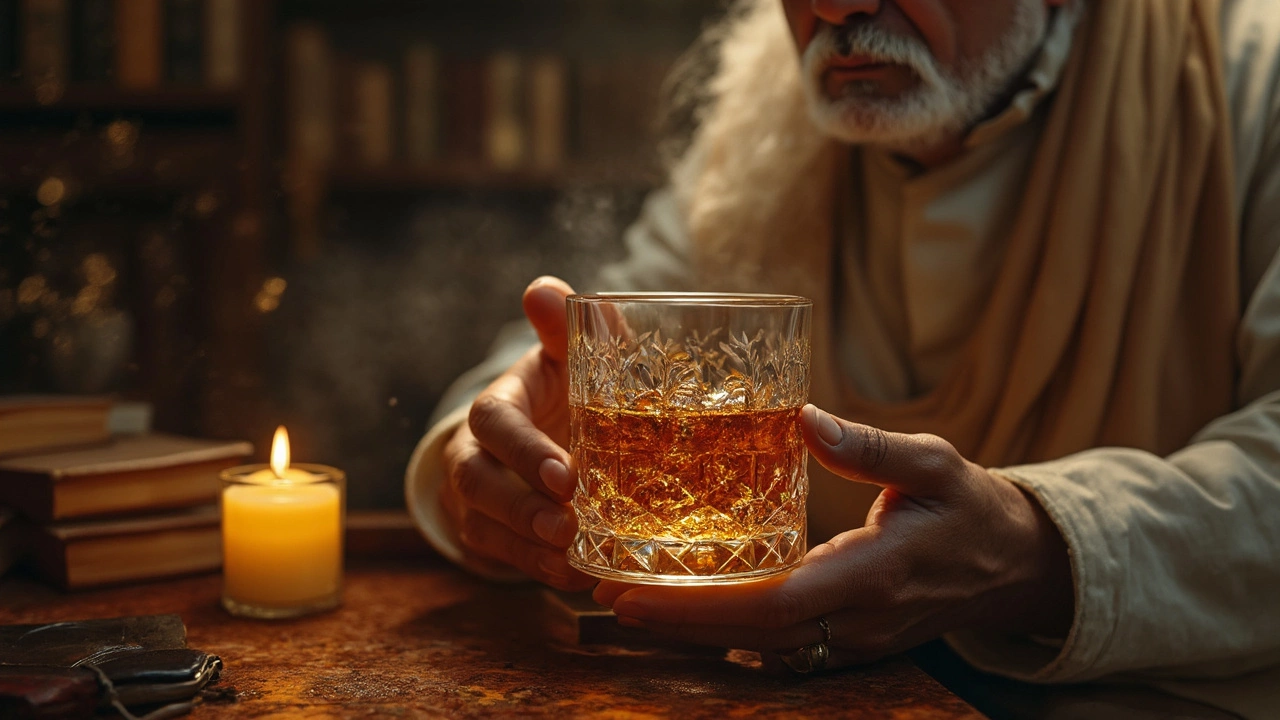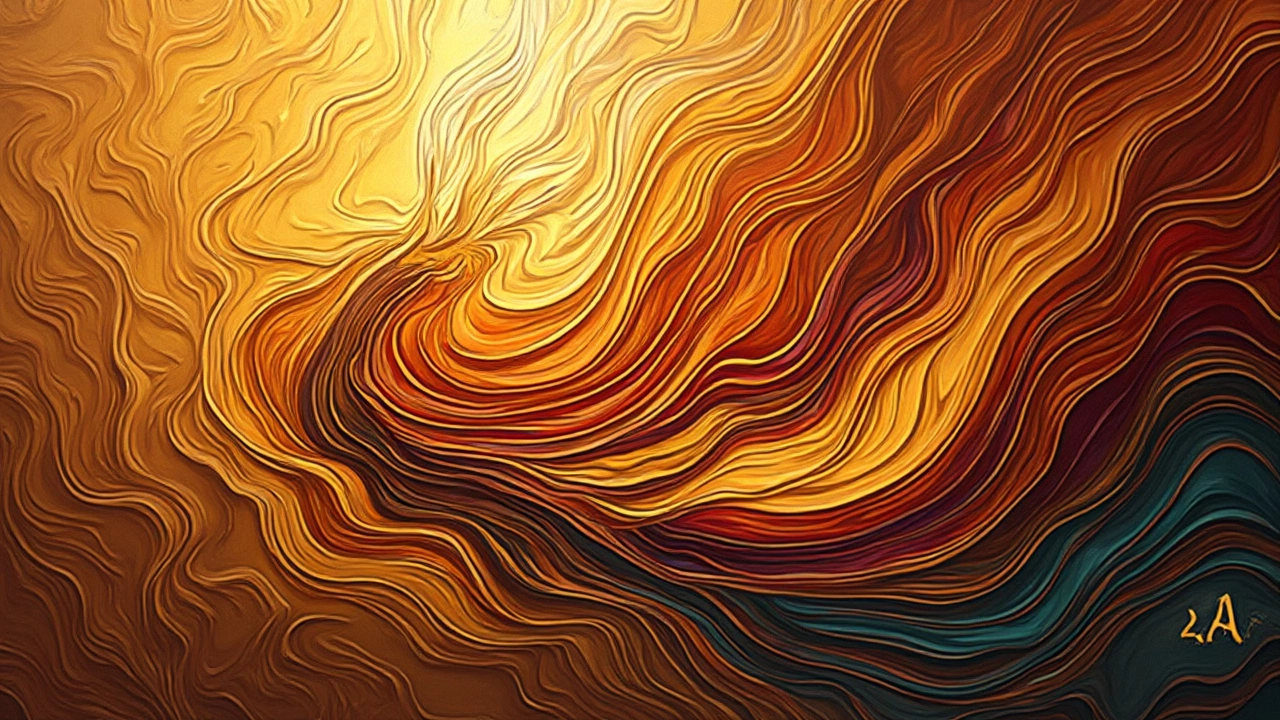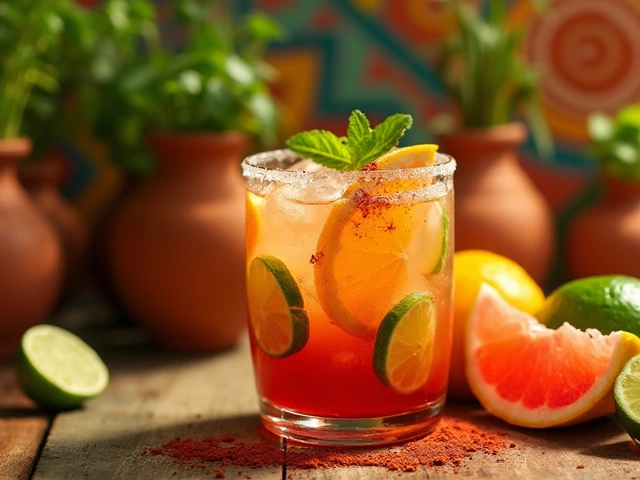
Ever wondered about those little streams running down the inside of your whiskey glass? They're called whiskey tears, or sometimes legs, and they're not just for show. Sure, they might look cool, but there's actually some science behind them that can tell you a thing or two about your drink.
These tears form because of the alcohol content in your whiskey. Basically, when you swirl your glass, the alcohol evaporates quicker than the water, causing those droplets to appear. It's a neat little trick of chemistry that happens right before your eyes.
Now, why should you care about them? Well, the thickness and speed of these tears can give you a hint about the alcohol level and texture of your whiskey. It's like a sneak peek into what you're about to sip. So, next time you're tasting whiskey, take a second to notice these tears. They might just make your tasting experience a bit more insightful.
- What Are Whiskey Tears?
- The Science Behind the Phenomenon
- What Whiskey Tears Reveal About Your Drink
- Influence of Alcohol Content on Tears
- How to Observe and Appreciate Whiskey Tears
- Interesting Facts and Tasting Tips
What Are Whiskey Tears?
So, let's break it down. Whiskey tears, also known as whiskey legs, are the droplets that form inside your glass when you swirl your drink. They're like little streams running down from the liquid line. This phenomenon isn't unique to whiskey; it happens with wine and other spirits too, but let's focus on our beloved whiskey here.
When you see those tears, you're actually watching science in action. It's all about evaporation and surface tension. When you swirl your whiskey, the alcohol and water start to separate a bit. The alcohol tends to evaporate more quickly than water, leaving the water to bunch up and slide down. This creates those unmistakable tears.
The Importance of Tears in Tasting
While they might seem like mere decoration, those whiskey tears offer some neat insights. Many folks say that the thickness and speed of these tears can tell you something about the proof and viscosity of your drink. Faster, thinner tears might suggest a higher alcohol content, while slower, thicker ones indicate more body or texture in the whiskey. It's not an exact science, but it's a handy little trick when you're evaluating a drink.
But why does this happen with whiskey and not, say, a soda? Because whiskey, with its blend of alcohol and water, plays into what's called the "Marangoni Effect," which is a fancy way of describing how liquid moves due to differences in surface tension. It's the same reason why a cup of coffee might cool from the outside inward. So, next time you're enjoying a glass, take a moment to watch those tears do their thing. It might just deepen your appreciation for the art and science of whiskey making.
The Science Behind the Phenomenon
Ever look at whiskey tears and wonder if there's a scientific reason they form? It's pretty fascinating, actually. These tears are all about the chemistry happening right there in your glass.
When you swirl your whiskey, the alcohol in the mix evaporates faster than the water. This difference in evaporation rates causes surface tension to pull droplets down the side of the glass, creating those distinct trails or 'legs'. It's what we science folks call the "Marangoni effect," named after the Italian physicist Carlo Marangoni who studied it way back in the 19th century.
Viscosity and Alcohol Content
The thickness, or viscosity, of these tears can give clues about the booze's alcohol content. The higher the alcohol content, the slower the tears move down the glass. Seeing slow-moving whiskey tears usually means you're dealing with a stronger drink.
"The formation of whiskey tears is a classic example of fluid dynamics at work in everyday life," explained Dr. Sarah Newland, a renowned chemist and whiskey aficionado. "It's a neat indicator of alcohol concentration and viscosity at a glance."
So next time you're inspecting a glass of whiskey, take a moment to appreciate these tears. They're not just pretty to look at—they're also a sneak peek into the spirit's makeup.
What Whiskey Tears Reveal About Your Drink
When you're checking out those whiskey tears, you're basically getting a sneak peek into the character of your whiskey. They're not just there for decoration; they carry secrets about what's in your glass. So, what exactly do they reveal?
Alcohol Content and Viscosity
The most obvious thing these tears show is the alcohol content. The slower and thicker the tears, the higher the alcohol level and viscosity. This happens because alcohol evaporates faster than water. So, when you see those tears, you're watching that balance between alcohol and water playing out right there.
Texture and Mouthfeel
Next up, texture. If the tears are slow and syrupy, you're probably looking at a whiskey with a richer, heavier mouthfeel. This kind of whiskey might stick around a bit longer on your palate, making for a luxurious sipping experience.
Flavor Expectations
Believe it or not, whiskey tears can even hint at the flavors. A thicker tear might suggest the presence of more oils and fats, often found in whiskies with rich, nutty, or caramel notes. Meanwhile, thinner tears could point to lighter, floral, or fruity profiles.
Practical Example
Let's say you're trying a single malt with tears that flow quickly and aren't very thick. This might suggest a lighter texture with a fruity or floral flavor profile. Compare that to a bourbon with slow, thick tears that could indicate a full-bodied sip bursting with caramel and vanilla notes.
So next time you're pouring yourself a glass, take a moment to swirl and observe. Those whiskey tears offer insights that go beyond what your nose and taste buds can initially pick up. Embrace them as part of your whiskey-tasting ritual, and you'll find yourself appreciating your drink on a whole new level.

Influence of Alcohol Content on Tears
The way whiskey tears trickle down the glass can tell you a lot more than you might think. If you've ever noticed some whiskies leave thicker, slower-moving legs, while others barely drip, that's due to the alcohol content.
Basically, the higher the alcohol content—the 'proof' in whiskey terms—the thinner and faster the tears will be. This happens because alcohol evaporates quicker than water, which pulls down the remaining liquid. Lower alcohol content results in slower, thicker tears because there's more water to keep things... well, wetter.
Understanding Whiskey Proof
The 'proof' of a whiskey is just a way of expressing its alcohol content. It's twice the percentage of alcohol by volume (ABV). So, a whiskey at 50% ABV is 100-proof. This measurement plays directly into how those tears behave in your glass.
Here's a little fun fact: whiskey legs can be hard to see in drinks with 40% ABV or less since they form slower and are less pronounced.
What This Means for You
If you're tasting whiskey and want a quick hint about its alcohol level, take a moment to notice the tears. Faster, thinner streaks usually mean higher alcohol content, while thicker, slower-moving ones often suggest a more watered down experience. This isn't just about detecting strength—it's about understanding texture and richness, too.
Remember, whiskey tasting isn't just about flavor. It's a whole experience that involves sight, smell, and even how it interacts with your glass. Next time, let the whiskey tears give you a little insight into your drink before you take that first sip.
How to Observe and Appreciate Whiskey Tears
If you're new to this, watching whiskey tears can feel a bit like watching paint dry. But there’s an art to it, and with a little practice, you’ll start seeing the hints your whisky's trying to give you. To observe these tears in action, you'll need the right conditions and a bit of patience.
Setting the Stage
First off, make sure to pour your whiskey into a clean glass. A tulip-shaped glass works best because it helps concentrate the aromas. When you're ready, swirl the glass gently. You're not trying to stir a hurricane, just getting the liquid to coat the sides evenly.
Watching the Tears
- Look Closely: Notice the speed at which the tears form and run down. The slower they move, the thicker the liquid, indicating a potential higher alcohol content or concentrated spirits.
- Take Your Time: Give the whiskey a moment. Sometimes it takes a bit for the tears to gather and start their descent. Patience is key here.
Appreciating What You See
As those whiskey legs drip down, consider what they're showing you. If they're thin and quick, your whiskey may be lighter or younger. Thick and slow legs suggest a richer, higher-proof drink.
| Whiskey Tears Speed | Possible Indication |
|---|---|
| Fast | Low Alcohol Content |
| Slow | High Alcohol Content |
Using This Knowledge
Once you're getting the hang of it, this isn’t just about looking; it’s about enhancing your tasting routine. Understanding the story your whiskey’s trying to tell can make every sip more enjoyable. So next time, take a second to appreciate those whiskey tears before diving in for a taste.
Interesting Facts and Tasting Tips
When it comes to whiskey tears, there's more happening there than meets the eye. Did you know these tears can actually give you a little preview of your whiskey’s body? Here's how to make the most out of it.
Alcohol Content Matters
The thicker and slower the whiskey tears, the higher the alcohol content tends to be. It's a quick trick to gauge strength without even taking a sip. So, if you're feeling bold or in the mood for something lighter, this can guide you in your choice.
Room Temperature Is Key
Temperature influences those delightful tears too. Room temperature whiskey tends to show clearer, more distinct tears. So, keep those chillers away if you really want to appreciate what your glass has to offer.
Glass Shape Influences Appearance
Believe it or not, the shape of your whiskey glass can alter the way these tears form. Wider glasses can make them more pronounced. Next time, try pouring the same whiskey into different types of glasses and see the difference.
Enjoying the Experience
- Start by holding your glass up to the light to easily observe the formation of whiskey tears.
- Give your glass a gentle swirl to encourage the formation of those intriguing legs.
- Take a moment to appreciate their pattern and speed before you enjoy your drink.
Fun Fact
Did you know that the phenomenon of whiskey tears is scientifically studied? It’s all about the Marangoni effect, where liquid surface tension changes make those tears creep down the glass. It's a neat crossover between chemistry and your happy hour!





Categories